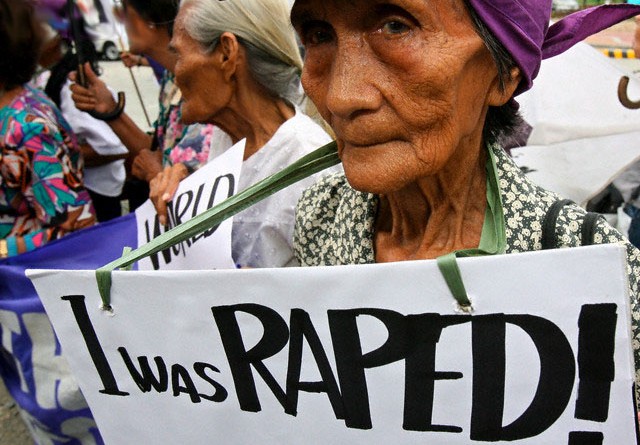Are the former sex slaves of Philippines doomed to die without justice?
It has been 75 years since Japan first invaded the Philippines. At the country’s heart beats the capital, Manila, once founded by the migrating Spanish Conquistadors of Mexico. Now, Japanese imported cars clog the arteries of the city as rickshaws flit from market to market bearing the heavy weights of vegetables, seafood and bags of rice while tourists set their sights on the waterfront promenade. Skyscrapers stand as glacial sentinels among architectural triumphs such as the baroque 16th-century San Augustin Church and Fort Santiago.
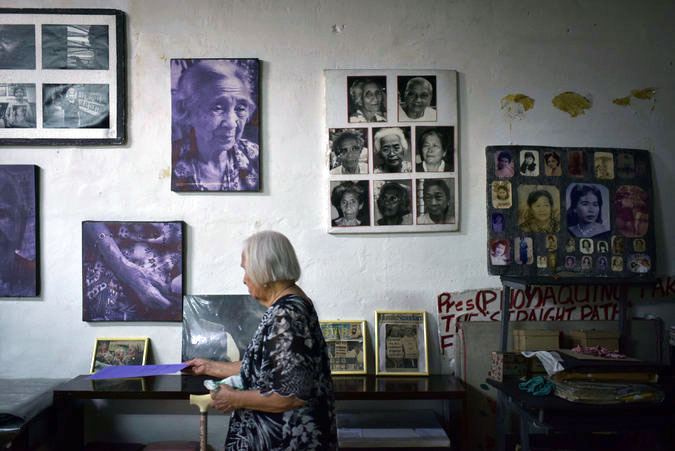
And somewhere amongst the businessmen and the beggars, a 90-year-old woman casts her weathered eyes up at a purple wall faded with age and plastered with the faces of departed “comfort women” – once fellow sex slaves to the Japanese soldiers of World War Two.
Hilaria Bustamante was a 16-year-old girl in 1943. She had been walking along a provincial road in Hermosa, northwest of Manila, when three Japanese soldiers threw her into a truck. She was beaten and taken to a nearby garrison.
Forced into a shack-like cattle, she and three other women were locked up and kept prisoner for more than a year. By day, she would cook for her military captors and wash their uniforms. By night, she was raped by several soldiers at a time.
“More than five men would rape me in one night,” she says, her voice frail but her words cutting like steel. “Every night the soldiers came to the prison where I was kept, I was raped. I was angry. I felt that there was no hope.”
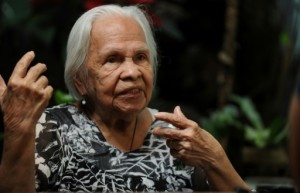
The entirety of her existence was validated by her ability to cook and to clean. She was not a woman. She was not a human being. She was an item with no name that could be used, abused and forgotten.
“When the Japanese realised that the Americans were coming in 1944, they surrendered,” she tells me. “That was the time when one of the soldiers helped me to escape the garrison.
“After the war ended, I remembered what happened to me every night until this day. Ever since I was taken, I have been fighting for justice and I have felt very angry. Even though it’s been decades, I still remember and I feel I have to keep fighting because of my experiences.”
She is the oldest known living Filipina “comfort woman” but remains unbowed despite painful arthritis. In a single conversation, Hilaria Bustamante breaks the heart of both me and my mother who sits by my side as we affectionately refer to her as “lola” – the Filipino word for grandmother. As a sign of deep respect, my mother occasionally says “poh” in conversation with the elderly lady.
Then we hear another voice.
Estelita Dy, now 85, was a 14-year-old girl buying food in one of the many street markets of Philippines after a long day of digging at a construction site. A truckload of Japanese soldiers started rounding up suspected spies. She ran for her life but tripped and was captured by one of the soldiers. He grabbed her by her hair and threw her into the back of the truck. Like Hilaria, she was taken to a garrison where she was held captive for 3 weeks before the Americans liberated her.

“I was raped every day by 3 to 5 soldiers at a time,” she says. “Every time I was raped, I would just close my eyes, cry and pray that it will all be over soon. I was only freed when the American soldiers arrived which is why I was only at the garrison for 3 weeks.”
She blames her weak hearing on having her face battered against a table by a Japanese solider who then raped her. Estelita Dy, a woman who worked as a rice cake and soda vendor, still thinks she was lucky her family had accepted what had happened to her.
“Many other women were condemned and driven out of their homes by conservative parents,” she explains.
Hilaria has had three children whilst Estelita has had five, all of whom have grown up aiding their mothers in a fight against war crimes committed to them.
“The Japanese government is responsible for what happened to me,” Hilaria says. “I never told anyone about it except my mother. I was too ashamed. But now I want people to know.”
“It’s a nightmare that never ends,” Estelita cries. “We walk with heavy hearts and we do not know who to turn to for help.”
Glossing over war crimes is impossible for the comfort women of Philippines who have protested for decades, their mental and physical pain ignored by both their own government and the Japanese. The stories of Korean women forced into sexual slavery by the Japanese military at the time of World War Two have been notorious worldwide.
December 2014 was seen as a triumphant month when Japan and South Korea came to a compensation agreement of 1 billion yen, equivalent to £5.6 million, followed by an official apology to be given to the 46 former Korean comfort women still alive today. A similar deal for the Filipino women has never been on the agenda.
Up to 200,000 women in Asia, the majority from South Korea but also from China, the Philippines and what is now Indonesia, are estimated to have been forced into sexual slavery by the Japanese military.
For the remaining 70 former “comfort women” of Philippines, the question they ask is this: where is our justice? Many of the women are now well within their eighties, many having become senile, sickly and blind in their old age.
Hilaria Bustamante and Estelita Dy are among a few still able to band together in public, among many other supporters, to protest as the “Lila Pilipina” organisation, otherwise known as the League of Filipino Women.

Rechilda Extremadura is at the head of Lila Pilipina and has been campaigning alongside the comfort women since 1992.
“It has now been 25 years of struggle,” Rechilda tells me in a weary voice. She believes the victims of the Philippines have not received the attention given to many of the women in other countries, partly due to poor advocacy by the Philippine government.
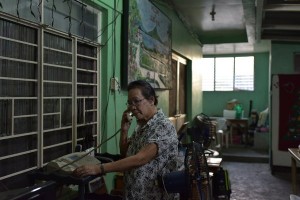
“It has long been a policy of the Philippine government that they do not support the plight of the Filipino ‘comfort women’. This, of course, makes us angry because it is the state’s responsibility to do so – the lolas are Filipino citizens. It is an obligation of the president to support them.
“This is a state to state matter and it is very important that the Philippine government represent the lolas. None of the presidents before Aquino acknowledged or represented the Filipino comfort women.”
“Do you think these women will ever receive justice?” I ask tentatively.
“Ah,” she says with a pause, “that is a very steep question, no? With the policies and the relationship between the Japanese and Philippine government, I don’t think now will be the time that the lolas receive justice. But we will continue to struggle. We will continue to fight for the states to recognise that the demands of the lolas are legitimate and that they deserve the justice they are calling for.
“The lolas are very angry, especially since the emperor of Japan came to the Philippines for a four day state visit in January. The lolas are already old and maybe some of them had nurtured some hope in their hearts that maybe when the emperor came, they would hear something positive from him. But he never mentioned the comfort women because the Philippine president, Benigno Aquino III, never mentioned it either so, of course, the lolas were so frustrated at being ignored. They are already at an advanced age and they are slowly dying.
“The Japanese government did something for the Korean women. Why can’t they do something for the women here?”
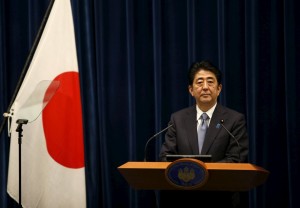
In 1993, the Japanese government had acknowledged for the first time that its military had been at least indirectly involved in coercing women into sexual slavery during World War II. This was known as the Kono statement. Later, a fund was set up by private donors in Japan that made payments to comfort women in Asian countries.
Many former comfort women rejected the payments, disappointed that it did not come directly from the government. The apology that had been given by Japan’s chief cabinet secretary, Yohei Kono, had also been unsatisfactory in the eyes of the comfort women who believed it did not adequately describe the scope of the atrocities.
In January, a Philippine presidential spokesman said that the issue of the comfort women was a matter that should be addressed to the Japanese head of government, Prime Minister Shinzo Abe, and not the emperor who obtains a largely ceremonial position within Japanese society.
Ricardo Jose, a history professor at the University of Philippines, believes the “delicate” issue of Japanese sexual atrocities during the war is often buried by the broader contemporary issues facing the two Asiatic states. According to the Japanese Embassy in the Philippines, Japan is the country’s largest trade partner and aid donor, providing more than $20 billion in development assistance since the 1960s.
Both countries have a mutual territorial threat in China which has become a growing concern for them as the Chinese has been growing its assertiveness in the South China Sea.
According to Professor Jose, the Japanese emperor is in a position to address historical grievances between the two nations because he is not an elected figure and can stand as a moral voice on the issue.
“He is very much respected by the Japanese people,” Professor Jose says. “If he recognized the problem these comfort women have and expressed grave remorse, it would be a major step forward.”
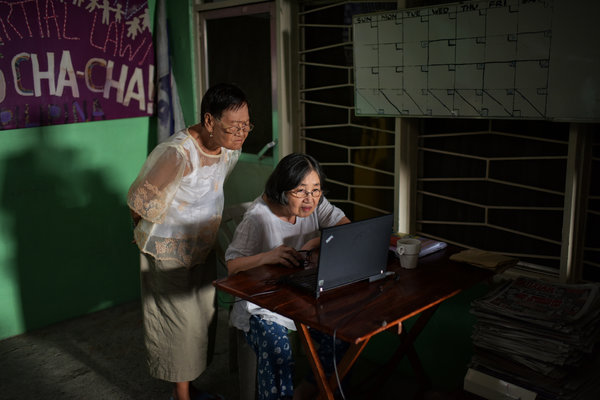
Instead, the emperor had jest to President Aquino that the notorious traffic jams of Philippines were caused in part by the many Japanese vehicles sold there.
Rechilda Extremadura, who had been in the company of the comfort women, was exasperated.
“They can joke about traffic, but they can’t talk about what happened to these women?” she asks.
The former sex slaves have come to depend on the rundown office of Lila Pilipina in Manila’s suburbs, a refuge where they could find comfort in shared suffering. The walls are purple, the colour of the local feminist movement. The women affectionately call each other lola as if greeting a long lost friend, though they may have first come from different provinces in the Philippines.
“Calling each other ‘lola’ shows that they are bonded by the same struggle,” Rechilda tells me. “They come to the centre to cry their hearts out. They yearn for the familiar touch of someone who understands exactly what they are going through.”

Hilaria Bustamante was one of only 10 of the comfort women who had been physically able to join the rallies that took place in Manila during Emperor Akhito’s state visit.
“Many of us have died without seeing justice, but we will fight until our last breath,” she says, sounding resolved. “We want to tell Emperor Akihito: pay your debts. We are holding you accountable for the sufferings of the comfort women during the war. This is an uncertain fight, but we will not stop.”
Whether the comfort women of Philippines ever receive justice for their plight is a question with an answer that remains as intangible as it did 75 years ago when women had cried for their freedom and lost all hope. It seems hope, coupled with a defiant determination, is now all that keeps the lolas driven to fight for what they want.
Hilaria Bustamante leaves me with words that stand as a resolute reminder of the world’s responsibility to learn from lessons of the past; “I do not want the same thing that happened to me to happen to any other woman again during a time of war.”

